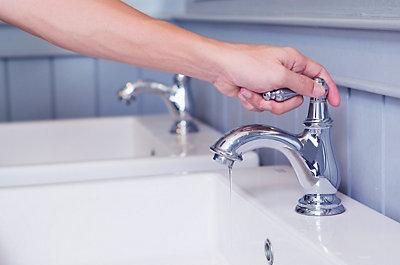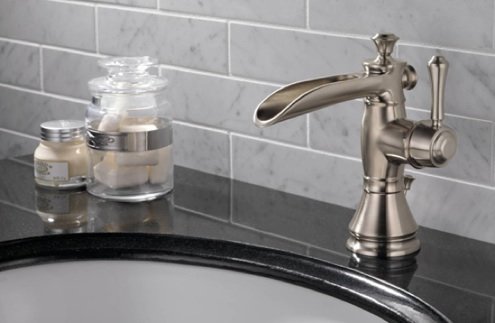What're your thoughts and feelings about Why It's Important to Fix Leaky Faucets?

Trickling faucets might look like a small trouble, but their impact goes beyond just the inconvenience of the sound. From drainage to incurring unneeded financial expenses and health threats, ignoring a dripping tap can bring about different consequences. In this write-up, we'll explore why it's essential to address this typical household problem quickly and properly.
Waste of Water
Ecological Influence
Dripping taps add considerably to water wastefulness. According to the Epa (EPA), a single faucet trickling at one drip per secondly can lose greater than 3,000 gallons of water each year. This not only strains water sources yet additionally impacts communities and wildlife based on them.
Step-by-Step Overview to Fixing a Dripping Faucet
Devices Needed
Prior to attempting to take care of a leaking faucet, collect the needed tools, consisting of an adjustable wrench, screwdrivers, substitute parts (such as washing machines or cartridges), and plumber's tape.
Typical Tap Issues and Their Solutions
Recognize the sort of faucet and the details concern creating the drip. Typical problems include worn-out washing machines, corroded valve seats, or damaged O-rings. Describe producer guidelines or on-line tutorials for detailed assistance on repair work.
Financial Prices
Enhanced Water Bills
Past the ecological influence, leaking faucets can blow up water bills substantially. The accumulated wastage over time converts into higher utility expenditures, which might have been avoided with prompt repair services.
Prospective Building Damages
Additionally, long term trickling can cause harm to fixtures and surface areas surrounding the tap. Water buildup can create staining, rust, and even structural problems if left unattended, causing additional repair expenses.
Wellness Concerns
Mold And Mildew and Mold Development
The constant existence of dampness from a dripping tap creates an ideal atmosphere for mold and mildew and mold growth. These fungis not just compromise indoor air high quality but additionally present wellness threats, particularly for individuals with respiratory system conditions or allergic reactions.
Waterborne Illness
Stagnant water in leaking taps can come to be a breeding ground for microorganisms and other virus, enhancing the threat of waterborne illness. Pollutants such as Legionella microorganisms grow in stationary water, potentially bring about major ailments when ingested or breathed in.
DIY vs. Specialist Repair
Benefits and drawbacks of DIY Repair Service
While some might attempt to repair a dripping faucet themselves, DIY fixings include their own set of obstacles. Without correct expertise and devices, DIY attempts can worsen the issue or result in insufficient fixings, extending the issue.
Benefits of Hiring a Professional Plumber
Hiring a professional plumber makes certain that the underlying source of the trickling faucet is attended to properly. Plumbings possess the expertise and devices to detect and repair faucet concerns successfully, conserving time and lessening the danger of additional damage.
Ecological Obligation
Individual Contribution to Conservation
Taking duty for fixing trickling faucets lines up with wider initiatives toward water preservation and environmental sustainability. Every person's activities jointly make a significant influence on protecting precious sources.
Sustainable Living Practices
By focusing on prompt fixings and embracing water-saving behaviors, individuals add to sustainable living methods that profit both present and future generations.
Safety nets
Regular Maintenance Tips
To prevent leaking taps, perform routine upkeep such as cleansing aerators, examining for leakages, and changing damaged parts quickly. Furthermore, take into consideration installing water-saving devices or upgrading to much more reliable fixtures.
Importance of Prompt Repair Works
Dealing with leaking faucets as soon as they're discovered avoids further water wastage and potential damages, inevitably conserving both water and cash in the future.
Influence On Home Worth
Assumption of Well-Maintained Building
Keeping a residential or commercial property in good condition, including addressing upkeep concerns like leaking faucets, enhances its regarded worth and value among possible purchasers or renters.
Influence on Resale Worth
Qualities with well-maintained plumbing fixtures, including taps, command higher resale worths in the realty market. Attending to dripping taps can add to a favorable impression during building examinations and settlements.
Final thought
Addressing a dripping faucet surpasses mere benefit; it's an essential step toward saving water, lowering financial costs, and guarding wellness and residential or commercial property. Whether with do it yourself fixings or specialist aid, taking action to fix trickling taps is a tiny yet impactful method to promote responsible stewardship of resources and add to a much healthier, more lasting future.
How to Fix a Leaky Faucet: Step-by-Step Repair Guide
A leaky faucet may seem like a simple annoyance, but if it's not fixed promptly, that leak could cost hundreds to potentially thousands. From water damage to mold, mildew, and high water bills, even a tiny leak can be catastrophic if left unattended. Damage like this can even affect the overall value of your home, so it's important to take the right approach for leaky faucet repair. You may need the help of a plumber in some cases, but we've got a few tips you can try on how to fix a leaky faucet before calling the pros.
Four Faucet Types
When you're learning how to fix a leaky faucet, the first step is knowing what kind of faucet you're working with! There are four common types.
Cartridge Faucets
Cartridge faucets come in one- or two-handled varieties. In one-handled cartridge faucets, hot and cold water combines in a single cartridge. In the two-handled versions, hot and cold water are controlled separately and mixed in the faucet.
Ball Faucets
Ball faucets have a single lever you push up and down to adjust the pressure and rotate to change the temperature. A slotted metal ball controls the amount of water allowed into the spout.
Compression Washer Faucets
They're the oldest type of faucet, but they're still used in many homes — especially older ones. Compression faucets have two separate handles that, when turned, raise or lower the washer that seals a water valve. This valve stops water from flowing through the faucet when it is turned off.
Disc Faucets
Disc faucets rarely need to be repaired due to their maintenance-free design. The water flow is controlled by two discs — the upper one raises and lowers against a fixed lower disc, creating a watertight seal. If your disc faucet starts leaking, you may need to replace the seals or clean residue buildup from the inlets.
Fixing a Leaky Faucet
Step 1: Turn Off the Water
Whether you're learning how to fix a leaky bathtub faucet or how to fix a leaky kitchen faucet, always turn off the water supply to your working area when you're fixing a leak. The last thing you want is a flood added to your list of things to fix.
Look for the shutoff valves below your sink or around the tub and turn them clockwise to stop the water flow. If your faucet doesn't have shutoff valves, you may need to turn off the water for the whole house. Check to make sure it's off by turning the faucet on. If nothing comes out, you're ready to start the repair.
Step 2: Take Apart the Faucet
How you disassemble your faucet depends on the type of fixture you have. You can use a flathead screwdriver to remove the caps on top of the handle or handles for cartridge and compression faucets. Inside, you should see handle screws. Unscrew these with a screwdriver to remove the handle.
Disc- and ball-style faucets will typically have an inlet screw near the handle, and removing that will reveal the interior of the faucet.
Detach the Valve Stem
For cartridge- and compression-style faucets, you'll see the inner valve stem or cartridge once you remove the faucet handles. If you have a compression faucet, unscrew the brass valve stem. If you have a cartridge faucet, pull out the cartridge. If your cartridge has been in place for a while, it may require some tools or extra force to remove it due to mineral deposits.
Examine and Replace Parts
Once you've removed the parts, check them out to confirm what needs to be replaced. You may see corroded rubber washers, O-rings, stems, or cartridges. On a ball-style faucet, check the seats and springs for damage.
If you need to repair a leaky disc faucet, check the inlet and seals on the lower disc.
Once you determine what parts must be replaced, visit your local hardware store. Bring the damaged parts with you to ensure you can purchase the correct components to replace them.
Clean Valves and Faucet Cavity
If you've removed a stem or cartridge, you may notice mineral buildup in the faucet's threads. Use white vinegar to clean the valve seat by soaking it for a few minutes, then scrub it away with a soft toothbrush and rinse with warm water. You can also clean the interior of the faucet in the same way.
Reassemble the Faucet
Once your faucet is cleaned and the required parts have been replaced, it's time to reassemble it. Put the pieces back together and slowly turn the water supply back on. Doing this slowly is crucial because too much initial water pressure can damage the new hardware you've just installed.
https://homewarranty.firstam.com/blog/how-to-fix-leaky-faucet

I stumbled upon that page about What Causes Leaky Faucets & How To Fix Them when looking around the internet. Liked our content? Please quickly share it. Let another person discover it. I thank you for reading our article about Why Is It Important To Fix Your Leaking Tap/Faucet?.